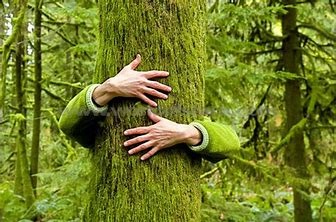ITS OVER ELM- ING!
Being a lover of trees, I am not embarrassed to admit enjoying the occasional hug and can honestly say there is something special about being amongst trees and all the benefits they offer.
Having just returned from a week’s break surrounded by fields and woods, it is absolutely no surprise that research suggests being around trees is good for both our mental and social well-being.
Life is stressful and every now and then it is important for us all to get away to take a break, take stock, recharge our batteries and just simply chill! What this looks like can be very different to each of us. However, the best tonic for consideration if not already top of the list is a dose of nature and spending time in natural environments as they are proven to boost our physical and mental health and act as fantastic stress busters.
Even just listening to the sounds of nature will help to relax us and given research suggests that nature experiences help us also feel kinder towards others, what have you got to lose?
Many studies involving trees show that people who live near trees have a better “amygdala integrity” which in layman’s terms means a brain structure more able to handle stressors as trees help us feel less stressed and more restored.
The most well-researched benefit of nature exposure is that it helps decrease our stress, rumination, and anxiety with much research conducted in forests. Even short amounts of time spent in a forest can provide a beneficial break from our frenzied lifestyles benefiting our immune systems too thanks to certain aromatic compounds they release.
Trees can help our heart health as walking in trees low blood pressure, cortisol levels, pulse rates, and sympathetic nervous system activity (related to stress), while increasing your parasympathetic nervous system activity (related to relaxation). All these physiological markers are tied to better heart health, suggesting that a walk in the woods will improve cardiovascular function.
Practice the art of shinrin yoku which is very popular in Japan and means “forest bathing! But it doesn’t just take a walk in the forest, contact with nature can happen in many other ways too, and spending time in your garden or local park can be just as good.
If you don’t have access to a natural environment, or difficulty getting outside for other reasons, quite a bit of evidence suggests that simply having a view of nature, whether real or digital, can deliver similar benefits. So, if you can’t get out, bring the outside in!
Meditation using trees is also becoming a popular technique for dealing with stress, as combining mindfulness with nature encounters could deliver even greater benefits. Listening to trees is a way of attuning our hearing and paying more attention to what we hear around us rather than letting sounds invade our space unawares. Trees therefore make for a wonderful subject of focus because they cannot move more than what the breeze blows, toning down distractions and causing us to relax and focus more clearly.
Why Trees are Good for our Health!
Trees can also improve health as the foliage helps to settle out, trap and hold particulate pollutants (dust, ash, pollen and smoke) that can damage human lungs.
Trees act as buffers, absorbing a significant amount of urban noise like traffic.
They provide us with colours, flowers, and beautiful shapes, forms and textures, adding interest by changing with the seasons, creating habitat and food for birds and animals.
As trees absorb carbon dioxide and other dangerous gases and, in turn, replenish the atmosphere with oxygen.
Trees conserve water and prevent soil erosion as they reduce surface runoff from storm water and prevent soil erosion and sedimentation of streams.
Trees increase ground water recharge to help make up for losses in paved areas.
Trees prevent wind from eroding soil.
Interesting Facts about Trees
An acre of trees produces enough breathing oxygen for 18 people every day.
An acre of trees absorbs enough carbon monoxide over a year’s time, to equal the amount you produce when you drive your car 26,000 miles.
A single mature tree can absorb 48 pounds of carbon dioxide per year and release enough oxygen back into the atmosphere to support two human beings.
Deciduous trees provide shade and block heat from the sun during hotter months. By dropping their leaves in the autumn, they provide sunlight in the winter.
Evergreens planted on the north sides of buildings can intercept and slow winter winds.

